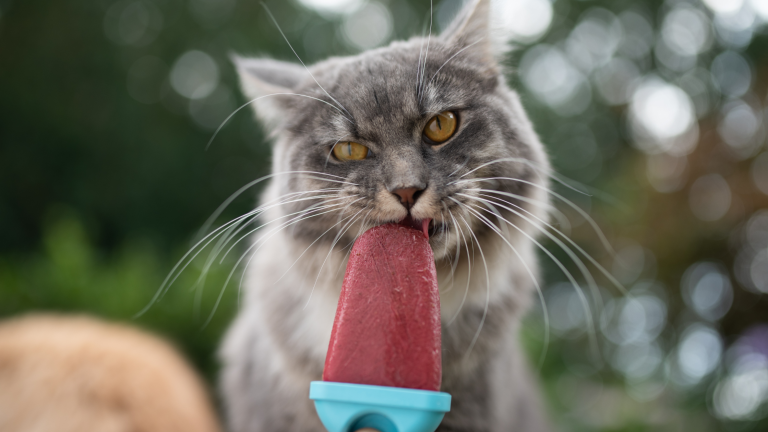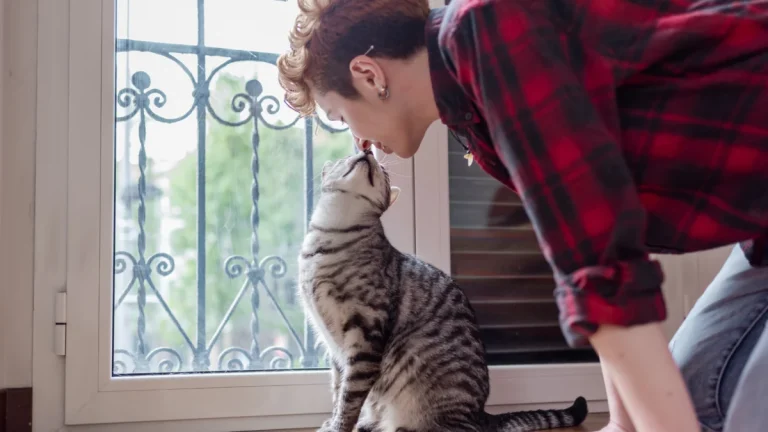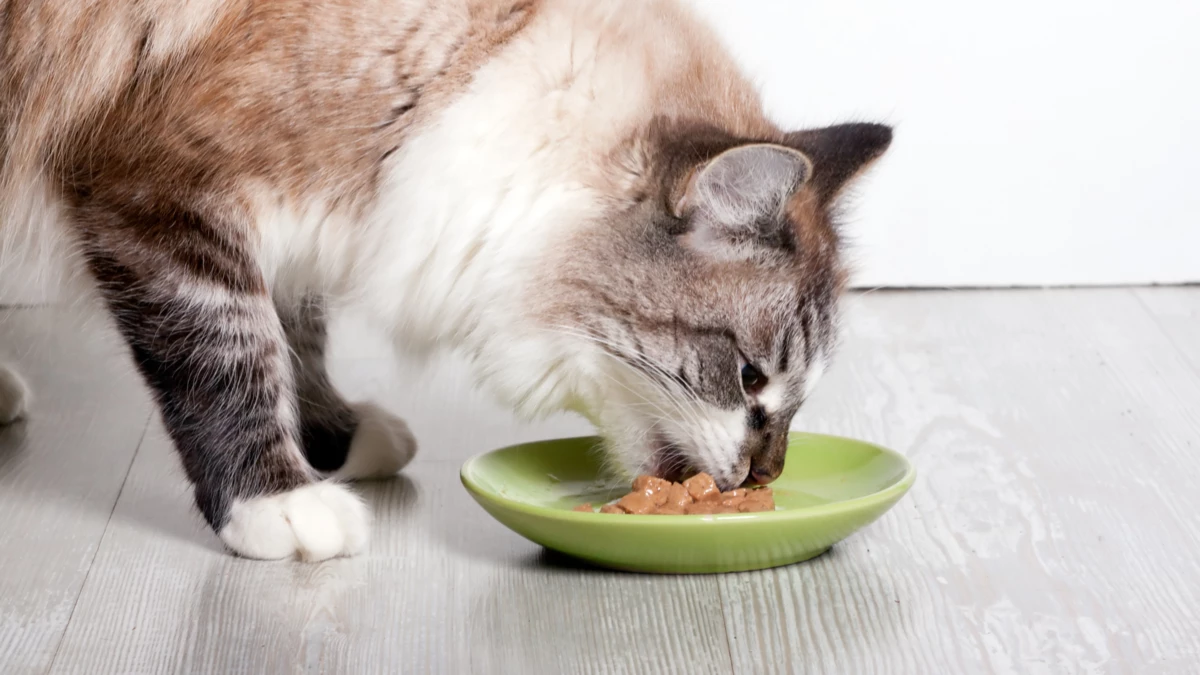Why Do Cats Purr?

Purring, often regarded as one of the most cherished vocalizations of cats, still harbors mysteries about its precise significance. The question “why do cats purr?” has intrigued many. It’s now understood that cats purr through the rhythmic contraction and relaxation of laryngeal muscles, regulating airflow to the vocal cords. This produces a distinctive low, continuous sound, even with the cat’s mouth closed, revealing only slight pauses between breathing phases.
With its vibration, the larynx regulates the passage of air to the vocal cords. The result is a low, continuous sound that the cat can produce with its mouth closed and in which only a small pause can be seen between one phase of breathing and the other.
Purring is equivalent to smiling
A smile expresses satisfaction and well-being and promotes social interaction by creating an environment of trust, comfort and good humor, both in those who receive the smile and in the person who is smiling. The same thing happens with the purring of thecats .
Our beloved mustaches purr when we pet them, when they are dozing on their humans’ beds, when their mother breastfeeds them, when they receivefood , when they meet their peers or when they clean each other. That is, cats purr when they feel good. However, purring is much more than an expression of comfort, another thing it has in common with smiles. It can also signal moods such as fear, stress, pain and hunger. But what is the reason for this sound in these situations?
Reasons why cats purr
Purring has a calming effect, not only on people, but also on the cat itself. The cat manages to calm itself with this, like no other animal. The Cats purr during childbirth to regulate pain, the still blind and deaf babies find the nipple, and with it protection, through their mother’s purring. Delight in the exploration of feline sensory wonders by exploring cat whisker roles. This article unveils the essential functions of cat whiskers, offering a deeper understanding of how these tactile hairs contribute to your cat’s ability to navigate and interact with its environment.
Dominant cats do this to show an insecure and nervous companion that they can relax, some felines purr when they feel threatened, to control and calm themselves. So, apart from the comfort purr, there is the one that is to reduce pain, calm down and maintain control. The kittens also use it as a means of communication. The Kittens use it to encourage themselves to play with each other and also to ask for more cuddles, attention or food from their human. Therefore, why a cat purrs can be due to different reasons:
- To express well-being
- To regulate stress
- To reassure yourself or others
- To alleviate the pain
- As a means of communication between peers or with people
Purring relaxes and is good for your health
No matter how different the purring situations are, their purpose is common: to promote and achieve relaxation and well-being. It is biologically proven that purring achieves this effect, since the deep and continuous hum releases serotonin in the feline’s body.
Serotonin, also known as the happiness hormone, is an important neurotransmitter that positively influences different processes, such as emotions, the central reward system, moods, consciousness, and pain evaluation. As veterinarians, scientists and ethologists have discovered, this is not the only positive effect on the animal’s health. Recent research has shown that purring has other medical benefits in cases of injury, illness, and pain.
Vibration training to heal
Purring makes the cat’s entire body vibrate. Professor Dr. Leo Brunnberg from the Clinic and Polyclinic for Small Pets at the State University of Berlin has discovered, in his research on the morphology of cats, that these vibrations stimulate the muscles and support bone growth. This surprising discovery about the self-healing mechanism of purring explains why cats almost never have broken bones, and if one does break, it heals very quickly.
In principle, purring has the same effect as vibration training that, for a few years, some doctors and physiotherapists have prescribed for athletes or other patients with bone or muscle problems. To strengthen the structure of the bones and muscles around them, the human body is activated with vibrations between a frequency range of 15 to 60 hertz. Many doctors believe that these vibration trainings are also suitable for patients with osteoporosis, because, as the purring cat demonstrates, long-lasting mechanical stimuli improves bone stability and density.

Positive effects of purring on humans
We humans have a lot to learn from the self-healing effects of purring and can even benefit from them (this is true not only for people with muscle tension or bone or joint diseases). In addition, the calming purr releases happiness hormones in our body and has the same calming effect on humans as it does on felines. Having a cat purring on your lap or in the Bed not only gives you happiness, but also reduces blood pressure, reduces stress symptoms and regulates possible sleep disorders in your human.
How do cats purr?
Without a doubt the effect of purring is amazing, but how do cats produce this constant hum? How do you make your body vibrate without getting tired or having to take in a lot of air? These questions have been asked by many researchers, but a conclusive answer has not yet been found.
While some believe that the muscles of the larynx, which expand and contract the glottis, are what cause the sounds, others believe that it is the hard and inextensible hyoid, which joins the tongue to the bones of the skull. Some suspect that skin flaps near the right vocal cords, or even the main artery, are causing the purring. At least the latter has been disproven. According to current research, purring is a resonance effect that is believed to arise when the vocal folds bounce.
Only cats know how to purr well
The fact is that cats can purr both when inhaling and exhaling, and this differentiates them in a very special way from most mammals, which can only (like humans) make sounds only when exhaling. Purring is reserved only for the cat world. In addition to domestic cats, lynxes, ocelots, pumas and cheetahs also purr. Big cats such as tigers, leopards or lions sometimes make short purring sounds, but only when exhaling, and they are not long-lasting.
However, precise measurements have shown that the uniform purr of felines is somewhat different during inhalation and exhalation. The sound when inhaling has a frequency of 27-40 hertz, being shorter and higher, while when exhaling, with a frequency of 16-28 hertz, it is lower and longer. But these nuances are not perceptible to the human ear. We hear our beloved kitten’s purrs as a constant and long-lasting hum, which they can effortlessly contain for several minutes.
Develop purring
What seems so easy actually requires a great anatomical effort. Although kittens are just a few hours old and purring towards their mother’s milk, they require a little more time to purr like their parents. But the effort has its reward, after all, purring is good for the psyche and for the bone and muscle structure.
Unlike meowing, which cats use to communicate only with humans, they use purring even when no one is around, that is, a solitary kitten purrs just like a domestic cat.
Daily purr
How nice that people, despite our inability to relax the mind and body with our own vibration, can benefit from the purrs of our mustaches ! This calming vibrational sound is not only transmitted between cats, but they also transmit it to people. A kitten purring next to us on the sofa causes blood pressure to decrease and leaves the stress of everyday life behind.
What are you waiting for? Sit on the couch, hold your kitty in your arms and pet him! You will feel how all the accumulated tension disappears and the sweet purr of your mustache puts a smile on your face.






